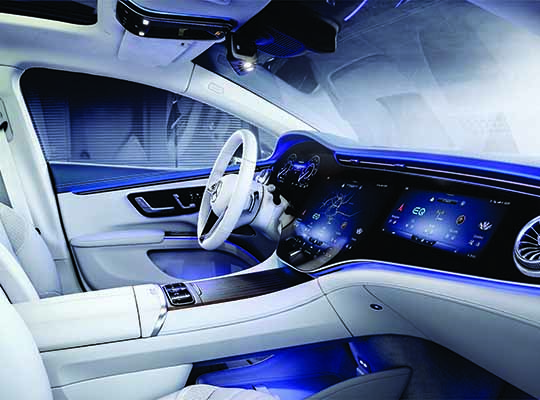The global In-Vehicle Infotainment (IVI) market was valued at US$ 18880 million in 2020 and it is expected to reach US$ 36820 million by the end of 2027. Growing at a CAGR of 9.5%, the IVI market is experiencing unprecedented market competition and a wave of technological innovations. Its scope is no more restricted to entertainment and information and redefining modern cars come with a myriad of revolutionary features that ensure better driving aid systems, safety, and convenience, to name a few. Embedded with these cutting-edge features, today’s high-end four-wheelers are not just meant to meet the commutation needs of millennial customers and the credit of this uber transformation chiefly goes to the innovations in In-vehicle infotainment (IVI).
In-vehicle infotainment is a collection of hardware and software in automobiles that offer a multitude of advanced features covering entertainment, information, connectivity, commutation, convenience, safety & navigation, and communication services. Today’s trendy and multi-tasking IVI systems use audio/video (A/V) interfaces, touchscreens, keypads, and other smart devices to cater entertainment and information to the drivers and passengers.
The genesis of IVI was marked with car audio systems of the 70s and 80s that consisted of radios and cassette players. But, with the advent of digital technologies, smart IVIs are now packed with Wi-Fi and Bluetooth-enabled functions such as interactive voice recognition services and live media streaming.
Powered by these innovative technologies in the communication and automotive industries, the following in-vehicle infotainment trends are going to rule in 2022.
Innovation, the key driver
The market has been flooded with innovative in-vehicle infotainment solutions. Augmented reality, window displays, AI-powered virtual assistants, surround-sound, high-definition visuals and interactive media are enthralling the auto enthusiasts with amazing driving and travelling experience. Furthermore, a bevvy of regular features such as hands-free phone connections, vehicle voice commands, and interactive audio or video applications will be upgraded on a regular basis throughout the year.
Enhanced connectivity
The safety of vehicles is changing rapidly as per new global norms and standards. To comply with them, all the leading automakers are manufacturing vehicles with pre-installed safety features and a new trend of connected car devices is fast emerging across the major segments. Besides, rapid growth in information, advanced features in IVI, and disruptions in telecommunication infrastructure, are emphatically backing connectivity related features in private as well as commercial vehicles.
The enhanced connectivity between vehicles is allowing them to communicate with each other via V2X platform, road infrastructure, and the cloud. Automotive dealers, fleet operators in logistics, and cab drivers are the biggest beneficiaries of improved vehicle-to-vehicle connectivity as it is the soul of advanced and efficacious navigation system. On the one hand, it boosts safety and helps to optimize resource usage; connectivity between vehicles also leads to generating valuable data pertaining to vehicle performance and road conditions, on the other hand. As the Government of India is keen to kick-start 5G services in this fiscal year, the industry will give high priority to connectivity in upcoming IVI solutions.
Artificial Intelligence will amp up
Like other tech-driven sectors in the present age, the automobile industry is also avidly embracing artificial intelligence technologies. In fact, the future of driverless cars is completely dependent on robotics, machine learning, deep learning, and other AI-based technologies. Since these are the IVIs that are primarily responsible for receiving commands and displaying results, the impact of AI is quite evident on high-end IVIs.
Experts also believe that AI is going to play an instrumental role in increasing the rate of production and decreasing the manufacturing cost. Moreover, AI can be quite effective in analysing the behaviour and history of a driver, which will help in risk assessment, predictive maintenance, and avoiding potential accidents. Usually, accidents on highways happen due to driver’s negligence, slumber, and inappropriate on-road behaviour.
Cling to cloud technology
A spike in demand for safety, comfort, luxury, and aesthetics led to several technological advancements in the automobile sector and a majority of these features rely on the in-vehicle infotainment system of a car. The performance of IVIs increases to manifolds with the marriage of cloud technology with automobile engineering. Capable of storing vast data and sharing it safely just on a click or voice command, cloud supported IVIs are phenomenal in increasing the comfort level of both driver and passengers inside the vehicle. Furthermore, to make a journey more lively and entertaining, commuters demand live streaming facility to listen to music, internet radio, and watching fun videos in a folder on smartphone or laptop. Cloud integrates all of them seamlessly and fosters the live media-streaming feature with enhanced convenience of the end-users. So, cloud-based in-car infotainment systems are going to be the sure shot fad of 2022.















